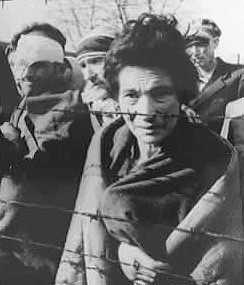Effects on the Next Generation
(back to top)
After the Holocaust many survivors married and started families, and
with these families comes the possibly of trauma transfer. Trauma transfer
is described by one scholar as "These offspring, the 'second generation'
from the trauma, may thus bear 'the scar without the wound,' since they
are significantly, if only indirectly, affected" (Albeck 1994, cited in
Williams-Keeler et al). Another scholar suggests the effect of transfer
is either the obsessive retelling of the survivorís story or an "all consuming
silence" (Mor 1990, cited in Williams-Keeler et al). Either way the offspring
learns about the Holocaust through their parentsí stories or lack thereof
as a means to attempt to understand or grasp what their parents went through
(Williams-Keeler et al).
A trauma transfer not only occurred from survivors to their children,
but from former Nazis to their children as well, Brendler found:
- 65% of German youths interviewed felt ashamed when they hear of the
mass murder done by their ancestors.
- 41% have feelings of guilt even though they were not involved in any
of the crimes themselves.
- 50% feel somehow paralyzed.
- 68% feel threatened, are afraid of punishment, or are afraid of the
future, while thinking of the Holocaust (Brendler 250).
The test group consisted of 22 participants ranging in age from 13 to
28, with the majority in their early 20s. Some of the studentsí fathers
had served with the Wehrmacht in WWII. Brendler concluded that "the enormous
guilt of the ancestors was combined, in these young peopleís concept of
themselves, with their own identity as Germans" (Brendler 260). This notion
of trauma being transferred to an entire nation, and to the international
psyche is unique to the Holocaust.
|
